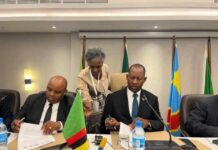THE Kwacha hit a record low of K6 on Wednesday against the United States (US) dollar, for the first time in over two decades, financial analysts say.
Both domestic and international factors have continued to put pressure on the local unit, which largely uses the US dollar as a convertible trading currency.
Barclays Bank Zambia says the local unit has weakened by over eight percent since the turn of the year due to persistent domestic demand for the greenback (dollar) coupled with unfavourable global conditions for emerging markets.
The bank says the local unit opened trading on Wednesday at K5.9 and K5.91and closed at K6 and K6.01 on the bid and offer respectively.
“The Kwacha incurred heavy losses on Wednesday as it fell by over one percent and sank to historic lows to breach the K6 level for the first time in history. With relatively lower corporate supply, the Kwacha is expected to remain under pressure at least in the short term,” the bank’s treasury newsletter says.
Similarly, Citibank in its daily market commentary says the local unit on Wednesday lost ground to touch yearly highs of K6.05, 3.44 percent depreciation in the first week of March alone.
The bank says the market recorded increased demand for the dollar from local corporates, while supply remained subdued.
Cavmont Bank Zambia’s market report also notes that the Kwacha extended its losses to record low against the dollar on Wednesday driven by strong dollar demand.
The local unit opened trading on Wednesday at K5.9 and K5.93 before closing at K6 and K6.03.
According to figures posted on the BoZ website during the week, the kwacha’s downward trend was witnessed from Monday’s opening of K5.8 and K5.81, falling to K5.89 and K5.9 on Tuesday and further decreased to K6 and K6.01 on Wednesday.
Meanwhile, BoZ assistant director of financial markets Isaac Muhanga said the kwacha is anticipated to recover the losses following the recent increase of the statutory reserve ratio to 14 percent from eight percent and policy rate to about 10.25 percent.
Mr Muhanga, however, said while the inventions are expected to mitigate the Kwacha volatility, the response by financial institutions is expected to determine the currency’s direction.

 JOIN DRIVERN TAXI AS PARTNER DRIVER TODAY!
JOIN DRIVERN TAXI AS PARTNER DRIVER TODAY!











